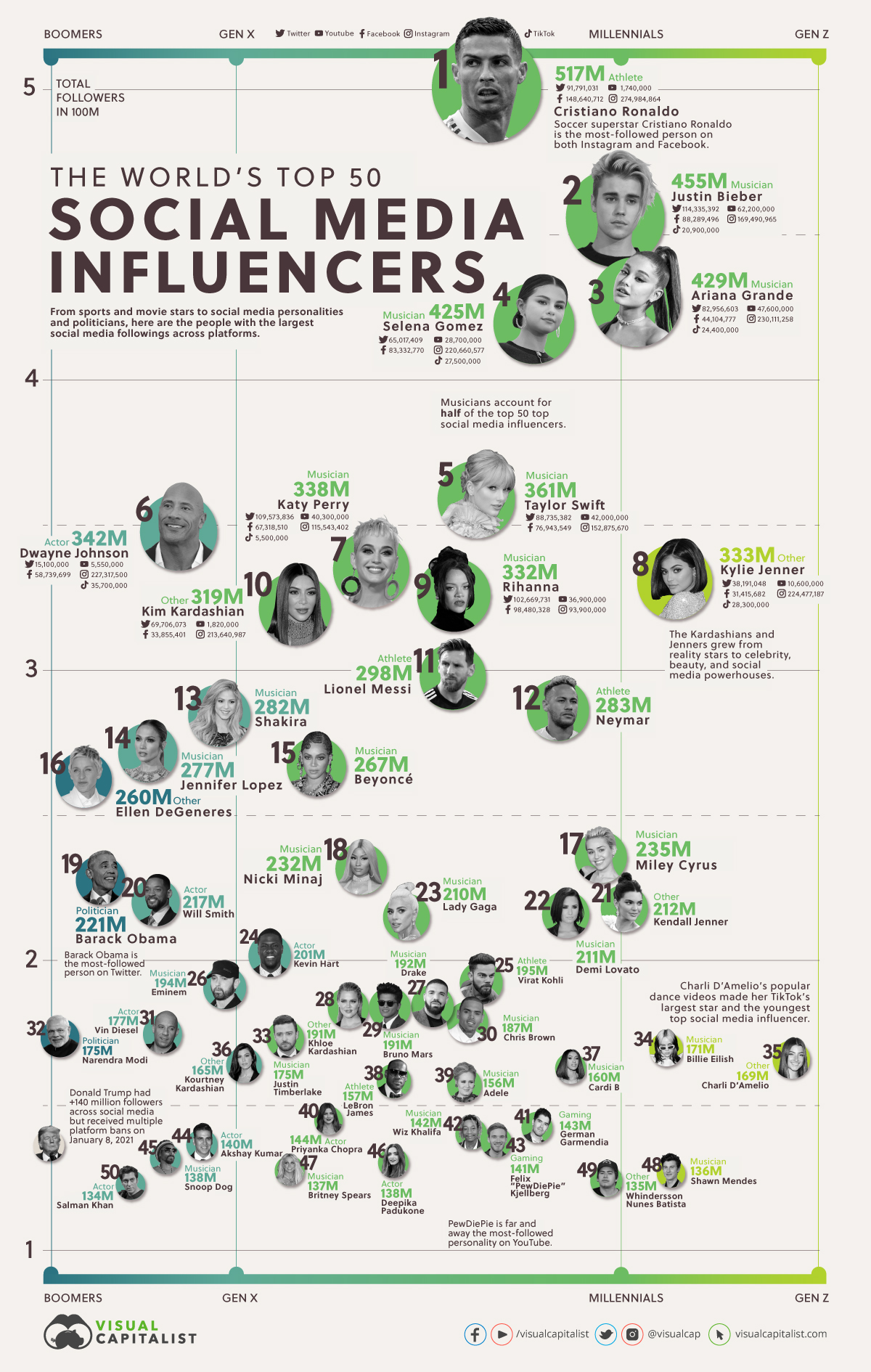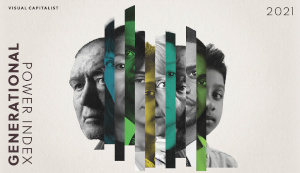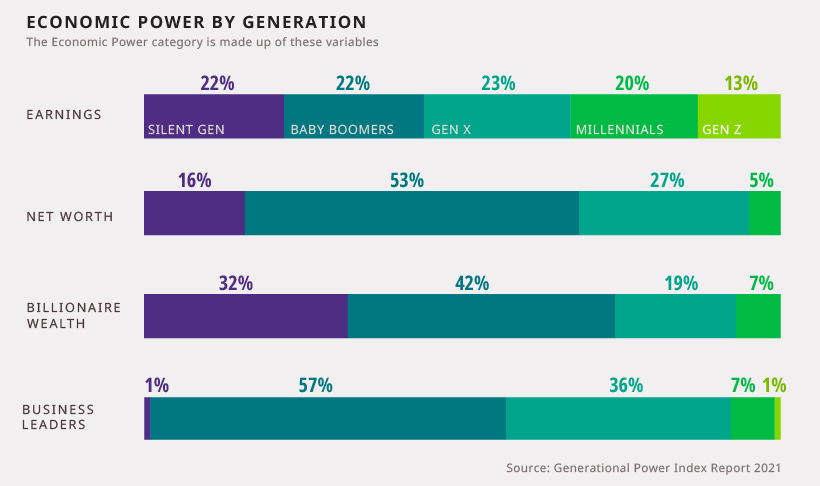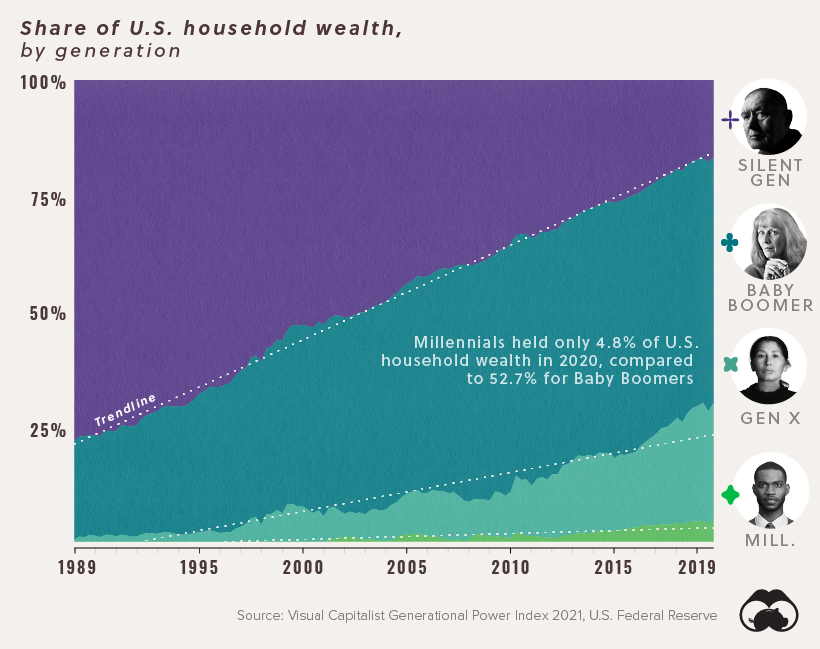How Do Trucking Companies Make Money?
Ranked: Top U.S. Companies, by Profit per Employee
Visualizing 150 Years of Exports for Top Economic Superpowers
Ranked: The Largest Stock Markets Over Time, by Country (1970-Today)
Prediction Consensus: What the Experts See Coming in 2024
Prediction Consensus: What the Experts See Coming in 2024
Visualizing the Top Global Risks in 2024
50 Years of Video Game Industry Revenues, by Platform
Mapping the Biggest Tech Talent Hubs in the U.S. and Canada
Charted: The Largest Pure Play Cloud Computing Companies
Ranked: The Top 25 Countries for Retirement
Prediction Consensus: What the Experts See Coming in 2024
Where Do the World’s Wealthiest People Live?
Charted: Top 10 Retirement Planning Mistakes
Charted: How Major Currencies Did in 2023
Visualized: What Lives in Your Gut Microbiome?
Charted: Average Years Left to Live by Age
Charted: The Average Cost of Insulin By Country
Ranked: The Best U.S. States for Retirement
Timeline: Cannabis Legislation in the U.S.
Cumulative Uranium Production, by Country (1945-2022)
Ranked: Top U.S. Companies, by Profit per Employee
The Periodic Table of Commodity Returns (2014-2023)
Visualized: Global Clean Energy Spending Forecasts (2022-2030)
Ranked: Electric Vehicle Sales by Model in 2023
Mapped: Racial Diversity by U.S. State
Mapped: The Population of U.S. States Compared with Countries
Mapped: How Houthi Attacks in the Red Sea Impact the Global Economy
The Venezuela–Guyana Dispute Explained in 3 Maps
Mapped: Which Countries Recognize Israel or Palestine, or Both?
The Periodic Table of Commodity Returns (2014-2023)
China Dominates the Supply of U.S. Critical Minerals List
The Critical Minerals to China, EU, and U.S. National Security
All the Metals We Mined in One Visualization
200 Years of Global Gold Production, by Country
Every EV Qualified for U.S. Tax Credits in 2024
Visualizing the Top Global Risks in 2024
Visualized: What Lives in Your Gut Microbiome?
Visualized: Global Clean Energy Spending Forecasts (2022-2030)
Visualized: Per Capita Electricity Emissions, by State
Published
on
By
>> Download the Report (.pdf)

In the modern digital world, social media reach is power.
The people with the most followers on Twitter, for example, have a massive platform to spread their messages, while those with large, engaged followings on Instagram are an advertiser’s dream sponsor partner.
Social media can also be an equalizer of power. It’s true that many celebrities boast large followings across platforms, but social media has also enabled previously unknown personalities to turn YouTube or TikTok fame into veritable star power and influence.
Who has the biggest reach across the entire social media universe? Instead of looking at who has the most followers on Instagram, Twitter, or other networks, we ranked the most-followed personalities across all major platforms combined.
We parsed through hundreds of the most-followed accounts on multiple platforms to narrow down the top influencers across social media as of April 2021.
Sources include trackers of the most followers on Twitter, Instagram, Facebook, YouTube, Twitch, and TikTok, verified directly on site and with social media tracker Socialblade.
The results? A top 50 list of social media influencers consisting of athletes, musicians, politicians, and other personalities.
Unsurprisingly, celebrities reign supreme on social media. As of April 2021, soccer superstar Cristiano Ronaldo was the most-followed person on social media with more than 500 million total followers.
But there are other illuminating highlights, such as the global reach of music. With large and diverse fanbases, artists account for half of the top 50 largest social media followings.
Also notable is the power of Instagram, which was the biggest platform for 67% of the top 50 social media influencers. This includes hard-to-categorize celebrities like the Kardashians and Jenners, which turned reality TV and social media fame into business and media empires.
Download the Generational Power Report (.pdf)
However, it’s not only celebrities that dominate social media.
Personalities that started on one social media platform and developed massive followings include TikTok’s most-followed star Charli D’Amelio and YouTubers Germán Garmendia, Felix “PewDiePie” Kjellberg, and Whindersson Nunes Batista.
Politicians were also prominent influencers. Former U.S. President Barack Obama has the most followers on Twitter, and India’s Prime Minister Narendra Modi has more than 175 million followers across social media.
Former U.S. President Donald Trump would have also made the list with more than 140 million followers across social media before being banned from multiple platforms on January 8, 2021.
While older generations have had to adapt to social media platforms, younger generations have grown up alongside them. As a measure of cultural importance, this gives Gen X, Millennials, and Gen Z a rare leg-up on older generations.
Millennials, in particular, hold the lion’s share of spots in this top 50 list:
The average age of the top 50 influencers was just over 37.
In our Generational Power Index (GPI), which measures the share of power generations hold in various categories, digital platforms were a key area where Millennials derived their power and influence. Overall, Baby Boomers—and to a lesser extent, Gen X—still run the show in most areas of society today.
As most fans and advertisers know, not all social media accounts and followings are homogenous.
Many influencers with relatively small followings have more consistent engagement, and are often able to demand high advertising fees as a result.
Conversely, most social media platforms are reckoning with a severe glut of fake accounts or bots that inflate follower counts, impacting everything from celebrities and politicians to personalities and businesses.
Regardless, social media has become a mainstay platform (or soapbox) for today’s cultural influencers. Billions of people turn to social media for news, engagement, recommendations, and entertainment, and new platforms are always on the rise.
Editor’s Note: An earlier version of the data used for this story incorrectly counted Facebook likes instead of followers for some personalities. The content has since been corrected and updated.”
Which U.S. Generation Wields the Most Economic Power?
Which U.S. Generation Wields the Most Cultural Power?
U.S. Streaming Subscribers: Projections for 2027
Charted: S&P 500 Sector Performance in 2023
Top 10 Stocks on Instagram and TikTok
Who Are America’s Most Popular CEOs?
Visualizing How Big Tech Companies Make Their Billions
Ranked: Gen Z’s Favorite Brands in 2023
Baby Boomers hold more economic power than Gen X, Millennials, and Gen Z together. See how it all breaks down.
Published
on
By
In our inaugural Generational Power Index (GPI) 2021, we’ve ranked generations on how much power and influence they hold in American society.
And when it comes to money and economic power, our research has concluded that Baby Boomers, those between the ages of 57-75, have more influence than Millennials, Gen X, and Gen Z combined.
These findings may seem intuitive, but what exactly contributes to economic power? To find out, let’s take a closer look at the GPI’s underlying variables.
Our starting point was to define the age ranges of each generation:
Using these ranges as a framework, we then calculated our four underlying variables of economic power. Here’s what the distribution within each one looked like: 
The earnings variable represents the median weekly earnings of full-time workers in the U.S., and was the most evenly distributed of the four variables. Gen Z had the lowest median weekly earnings ($614), while Gen X had the highest ($1,103).
Boomers established a clear lead in the second variable, net worth, which represents each generation’s share of overall U.S. wealth. As it turns out, Boomers hold 53% of all wealth in the country—more than all other generations combined.
The third variable captures each generation’s share of billionaire wealth, and was dominated by Boomers and the Silent Gen. We calculated this variable by starting with the top 1,000 billionaires globally, then filtering for Americans only.
The final variable, business leaders, is based on two underlying metrics: the generational share of both S&P 500 CEOs and small business owners. This enabled us to capture data from two sides of the business spectrum to see who holds power there.
Download the Generational Power Report (.pdf)
America’s wealth distribution is not stagnant, meaning the balance of economic power shifts with each passing year. Keeping this in mind, here are two of the most compelling trends that we discovered while analyzing data for the GPI report.
The following chart illustrates each generation’s share of household wealth over time. 
It makes sense that Baby Boomers would hold the most wealth of any generation. They have had more time to accumulate assets, and the population of Boomers is roughly three times higher than that of the Silent Generation.
What’s more interesting, however, is the stark difference in wealth trajectories between Boomers and younger generations.
While Boomers entered the workforce in a prosperous post-WWII era, Millennials and Gen Z have either started their careers in the aftermath of the 2008 Financial Crisis, or in the midst of the COVID-19 pandemic.
To put it in perspective, when Baby Boomers were as old as today’s Millennials in 1989, they held 21.3% of U.S. wealth. That’s more than four times higher than what Millennials hold now.
America’s small businesses may not have the same scale as global corporations like Apple or Amazon, but they are an incredibly important part of the U.S. economy.
In fact, small businesses make up 99.9% of all U.S. companies, and employ one-third of the nation’s workforce.
Here is who runs small businesses, from a generational perspective:
The 13% share held by Millennials may not sound too impressive, but it is one of the cohort’s strongest areas for economic power.
Looking forward, it seems entrepreneurship will grow into an area of strength for both Millennials and Gen Z, who are 188% more likely to want to create a side business compared to older generations.
Combine this with the fact that e-commerce adoption has been accelerating even faster than expected due to the pandemic, and it’s easy to see how younger, more tech-savvy generations could quickly expand their influence.
America’s Most Valuable Company Every Year Since 1995
Charted: Top 10 Retirement Planning Mistakes
China Dominates the Supply of U.S. Critical Minerals List
The Periodic Table of Commodity Returns (2014-2023)
Charted: Chinese FDI Inflows Hit Multi-Year Lows
Visualizing the Top Global Risks in 2024
Now Available: 2024 Global Forecast Report
Where Do the World’s Wealthiest People Live?
Copyright © 2023 Visual Capitalist



